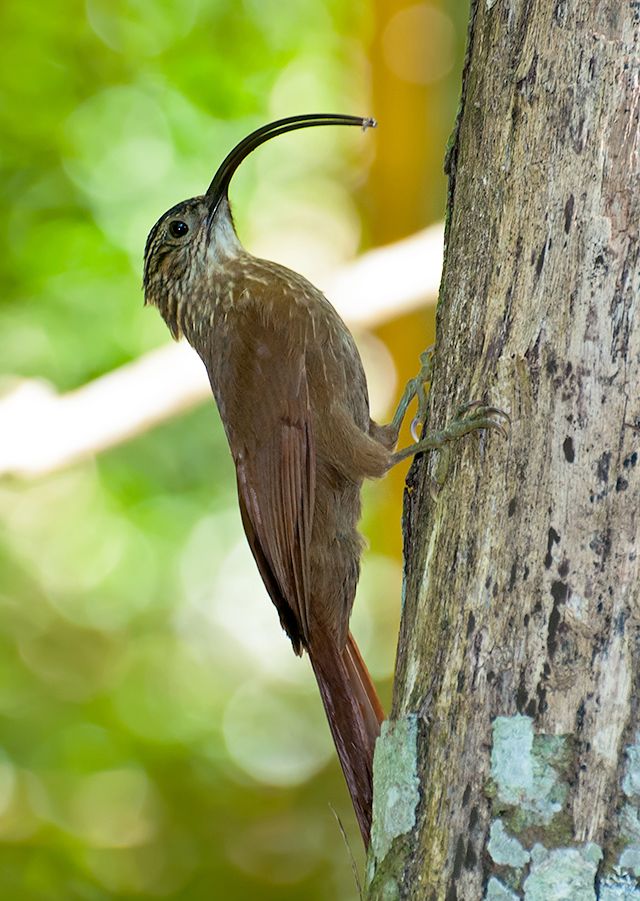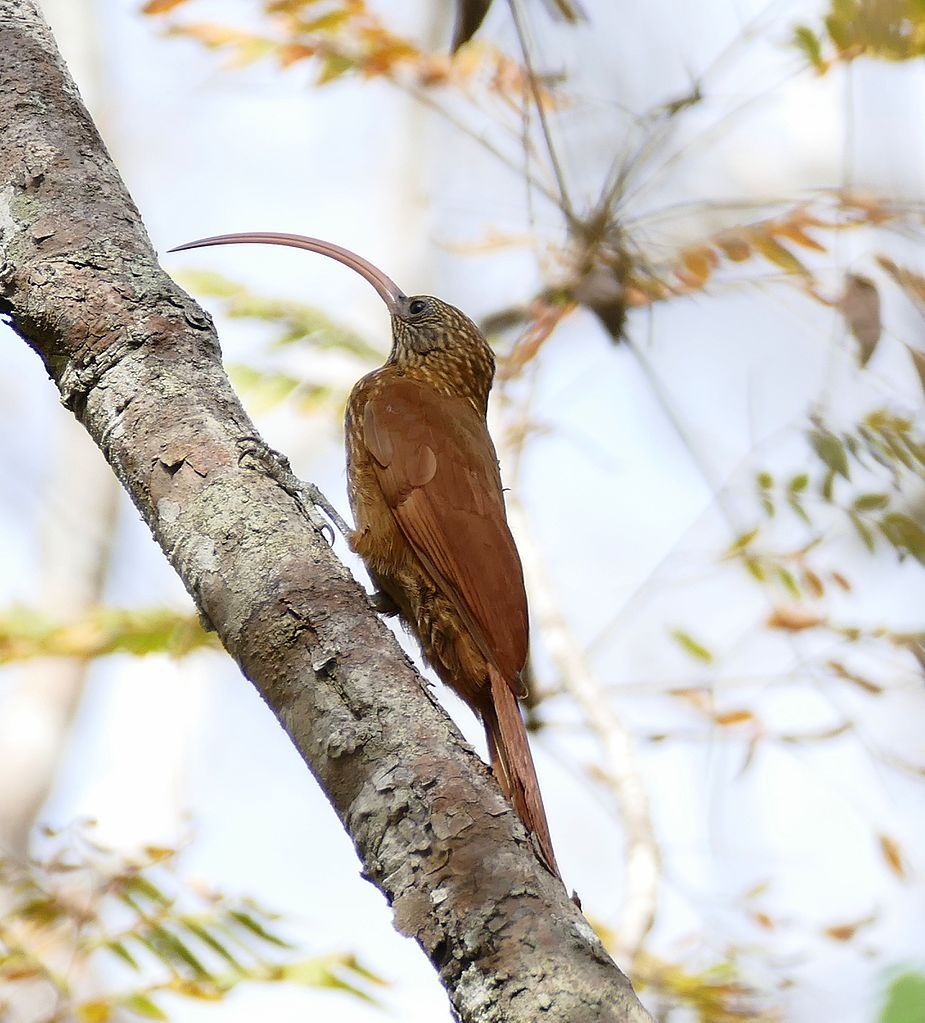
When bird habitat is destroyed some people say, “Birds can fly. They should just move and they’ll be fine.”
A study published in December 2012 in Ecology Letters shows why that idea doesn’t work.
Oxford University scientists, lead by Dr. Alex Pigot, studied the ovenbird (Furnariidae) family(*) in South America. They found that closely related species who evolved similar feeding strategies do not live in the same region. Their strategies are characterized by the shape of their beaks and Furnariidae have some amazing ones!
The black-billed scythebill (Campylorhamphus falcularius), above, pulls insects out of bark, bamboo and bromeliads in a narrow range of the Atlantic Forest from eastern Brazil to northeast Argentina.
His close relative, the red-billed scythebill (Campylorhamphus trochilirostris) below, picks arboreal invertebrates from tree trunks and branches, similar to a nuthatch or creeper. He ranges widely across South America from Panama to Argentina, from Ecuador to Brazil.

Each species has its niche.
What happens when the scythebills lose their habitat? Obviously, the homeless species finds a new location but the other species is already there and successfully exploiting the niche the new ones need. The study found that the new arrivals are out-competed by locals and cannot survive. They can’t just move and find success.
The study suggests that the effects of climate change will not be a simple shifting of bird populations but new layers of competition in a changing world.
Read more about beaks and ranges in Science Daily’s Bird beaks show why ‘sister’ species don’t live together.
(photos from Wikimedia Commons; click on the captions to see the originals)
(*) Furnariidae are not related to our ovenbird warbler though both build nests that look like little Dutch ovens.
This reminds me of the time I had to call the USFWS because somebody at the boat docks in Brackenridge was planning to cut down a dead sycamore that was home to a Yellow-shafted Flicker nest. And they even had permission from the borough!
When I called the USFWS office – located in Massachusetts of all places! – the woman I talked to said “Well, they’ll just move to the next tree!” (Believe it or not!) To which I of course replied: “And exactly which tree would that be; how many trees suitable for flicker nests do you think we have?”
She didn’t have much to say in response, but it worked, because they left the tree alone, and we had a successful nest. Until that is the tree fell down on its own the following winter. But as least I saved it for one nesting season.
Good question: “Exactly which tree would that be?”
My landlord called the city to cut down foliage and bushes near his storage shed so they cut down a large area along a fence separating the wooded area from the road. He was afraid the bushes would cause a firestorm hazard. I disliked what he did because some of the bushes were very pretty but mostly they were home to a lot of birds who flew around as if in shock when their safe perches were suddenly gone. The cutting of the bushes did nothing to protect structures from firestorms but destroyed habitat of birds and other wildlife. I’m disgusted but can’t undo the damage. Whenever I see it I’m upset. My landlord loves to use his electric bush trimmer and it gets on my nerves whenever I hear him use it !